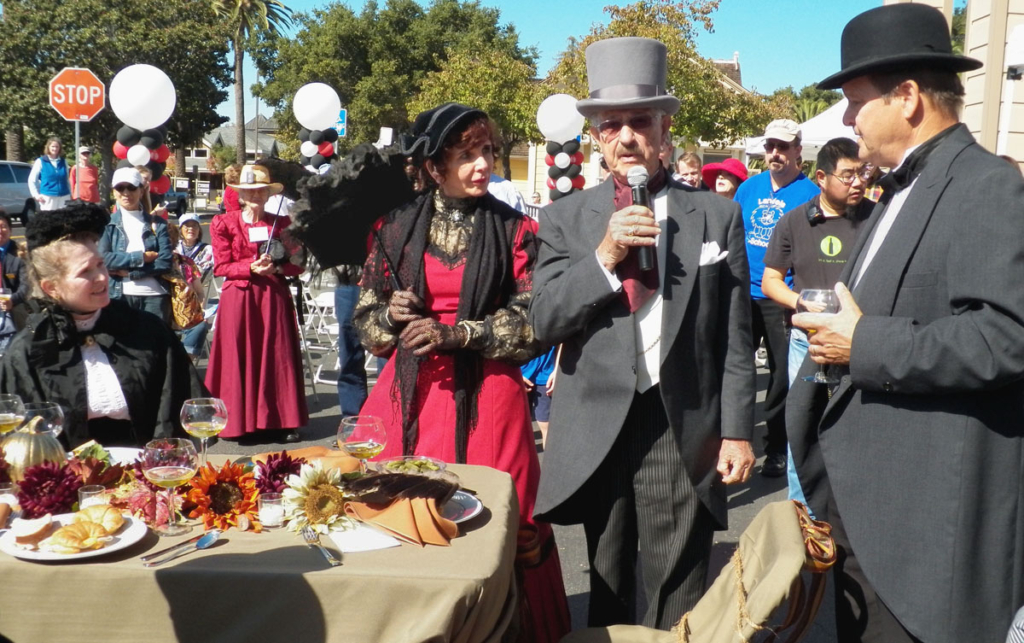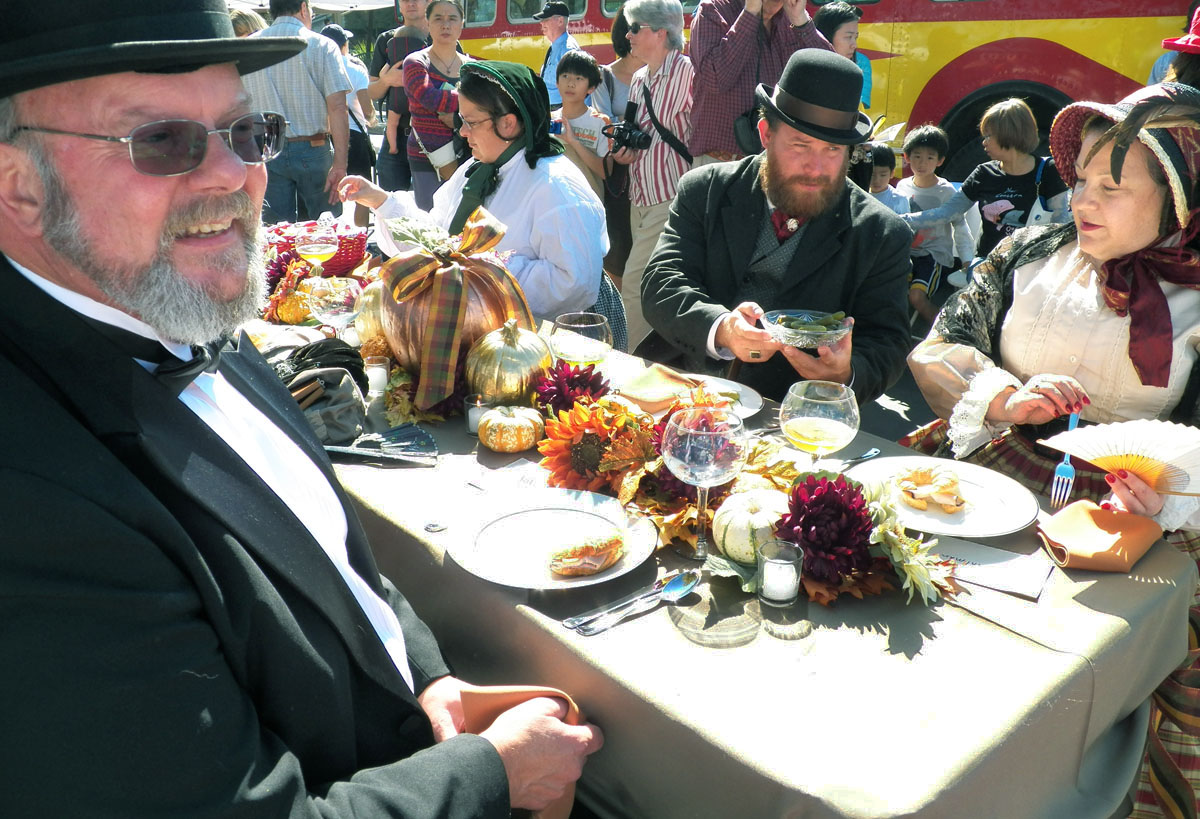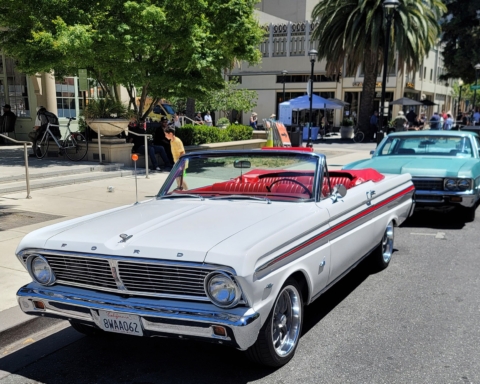By Heidi Van Zant
The Millie Collection of Vintage Clothing, burrowed deep in the basement of the San Mateo County History Museum in a storage room just across from the old boiler, is a magical treasure chest of memories where it’s always dress-up day.
Cabinets stacked high with pantaloons, corsets and gloves of yore and walls lined with racks of Victorian dresses, ’50s cocktail attire and even some va-va-voom orange hot pants – this is a feast of finery unlike any other in Redwood City.
“It’s a collection meant to be worn and touched,” said Carmen Blair, deputy director of the San Mateo County Historical Association, taking in the room stuffed floor-to-ceiling with Edwardian bowlers, silken Victorian dresses and satin dress shoes. “When I wear these things in a show I talk about who wore the dress. I want to give you a sense of history. It brings history to life in a way mannequins don’t.”
Unlike the “permanent” collection of more pristine clothing used in the public history displays upstairs, this is an “education” collection of well-loved clothing kept for safekeeping behind closed doors for museum models to wear in historical parades, fashion shows, costumed reenactments and special events including Women’s History Month.
The Namesake Millie
The Millie Collection of Vintage Clothing is named in honor of founder Millie Hagstrom, the late museum volunteer who began the costume collection in the 1980s.
The too-many-to-count items are tidily organized, some in old metal filing cabinets with index cards denoting whether it’s long slips from the 1940s and ’50s or shawls from the Victorian era, while other costumes are covered with sheets on hangers with personal notes attached of their history.
All of them come with a story to tell.
There are the orange 1970s hot pants that Auxiliary member Betsy Bogel donated and a pair of black velvet shoes with a jeweled clip from the Civil War period that came “from the great-grandmother of Betty Burton.” Then, there’s the black-and-white woman’s wool bathing suit which did the flapper era proud. The costumes are predominately for women although there are some men’s suits, hats and military uniforms.

Some things likely won’t see the light of day again – older dresses from the 1800s too frayed to be restored, once-coveted fur coats from the 1930s with a dead animal head and paws draped over the shoulder, a purse made of alligator skin, and drawers full of very old unmentionables. The oldest item is a woman’s silk taffeta day dress from the 1840s with pagoda-style sleeves.
Raiding Closets
The museum culls from estates, attics and closets across the region but on occasion Blair has even raided her own wardrobe to donate a woman’s blazer with padded shoulders and a bridesmaid’s dress when more “modern” offerings from the 1990s and beyond were needed for a show.
Also lovingly tending to the Millie Collection is volunteer Laura Cox of Belmont, who with her background in theater, costume design and teaching has found her calling in this crowded room. Her favorite part is seeing the reaction when schoolchildren touch the clothing that youngsters their age wore in the 1800s. “I see this light go on in this little girl’s face as she asks, ‘Who do you think wore these?’ ”
Because of Covid restrictions, the popular 2021 Victorian Days fashion show was done online and the models wearing their hoop skirts and corsets also had to wear masks. The hope is that the 2022 events will be live again but that has not been decided yet.

Prior in-person events have included Caltrain’s 150th anniversary celebration with a reenactment of an 1863 picnic at the Menlo Park train station and the popular Wedding Fashions Through Time event, where many of the clothes have to be worn by teens and pre-teens because of the narrow measurements of the dresses.
Museum volunteer Cox has had many personas in her years of putting on costumes from Millie’s Collection but a favorite is dressing as a Victorian-era maid for re-enactments.
“I have a white shirt, black skirt, a beautifully starched little hat, and these wire-rimmed glasses,” she said. “Depending on the house and the estate, there would be different maids for cooking, dusting, mending. I was a lady’s maid – you dress the lady and listen to them. But I like the fancy attire, too.”






